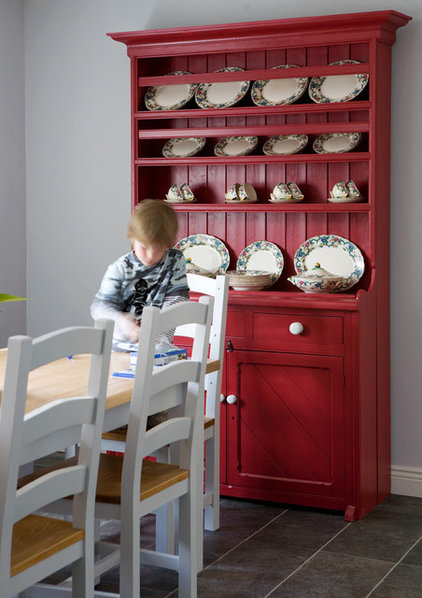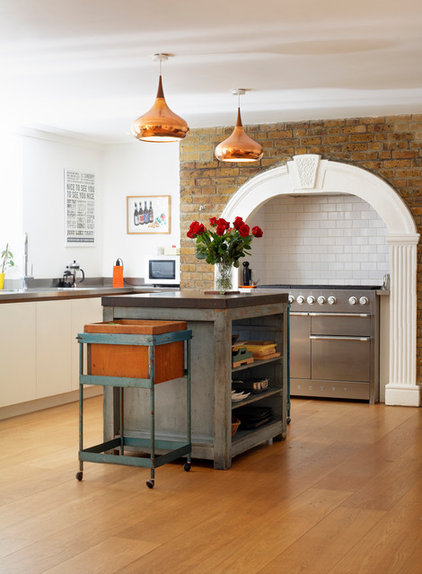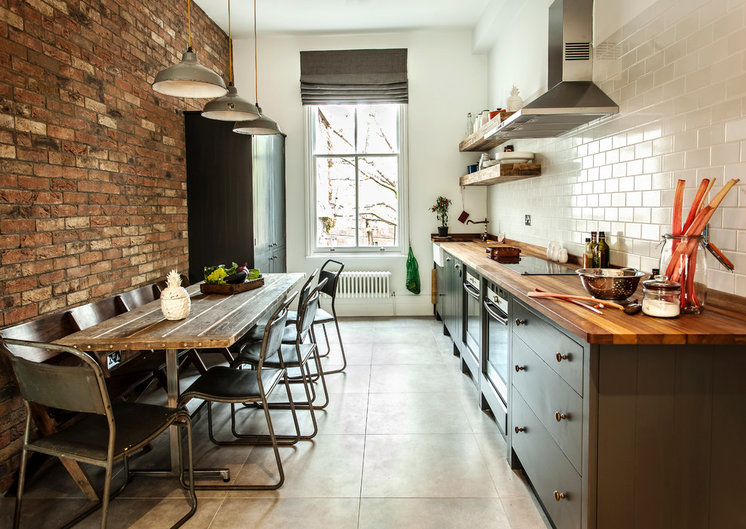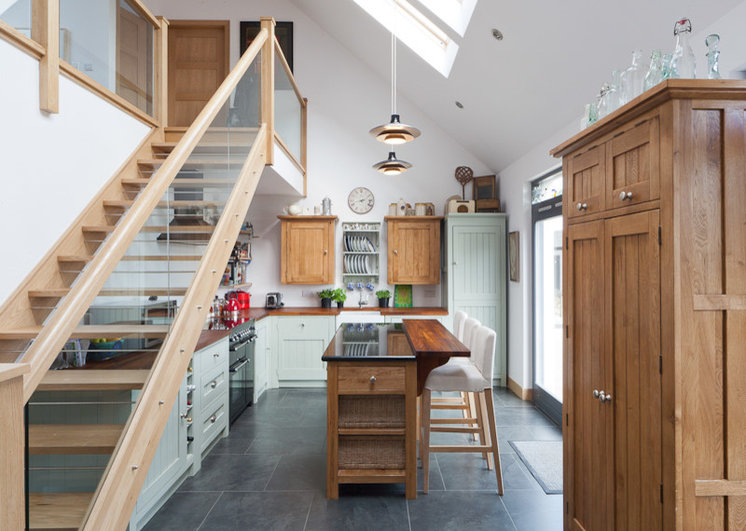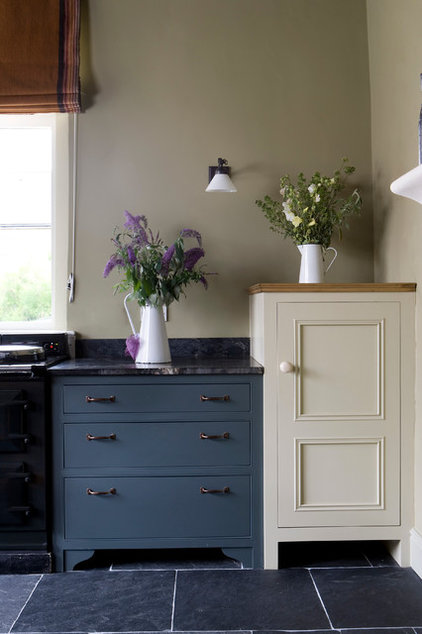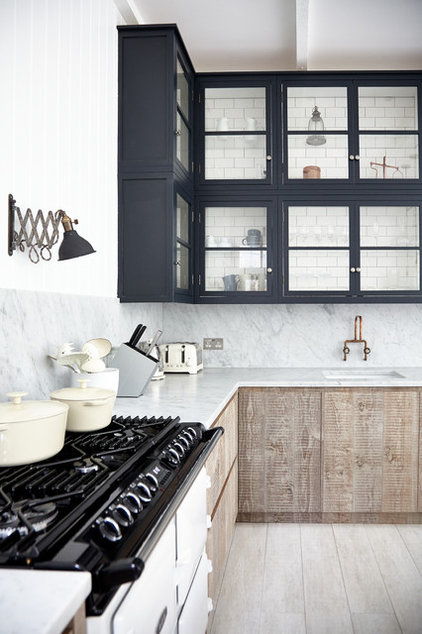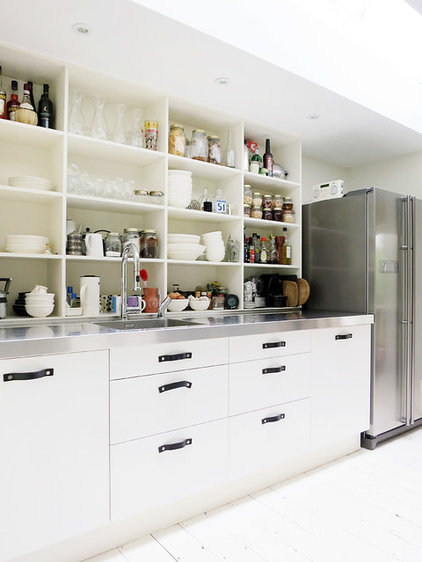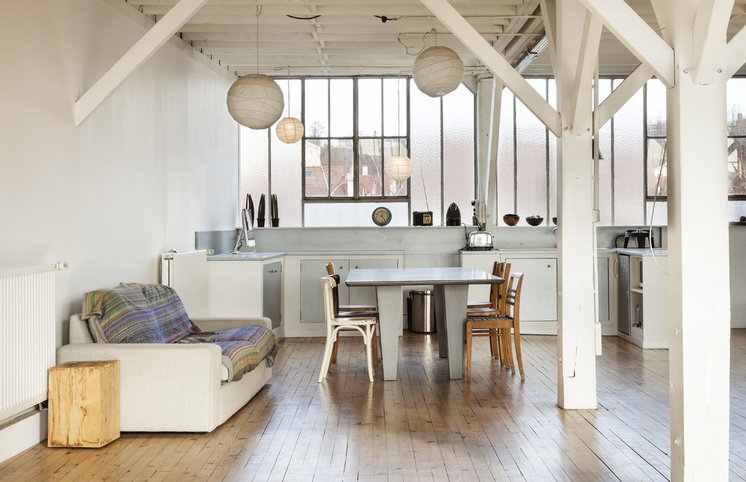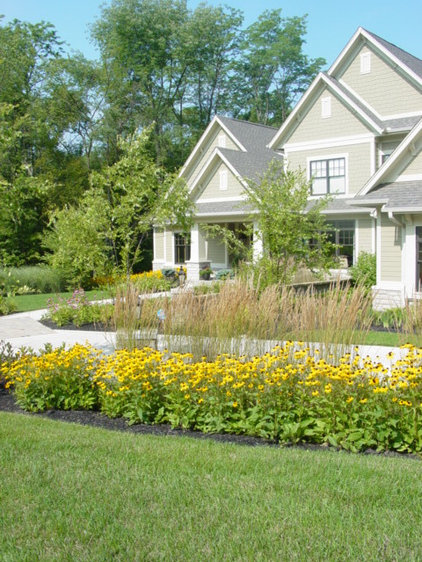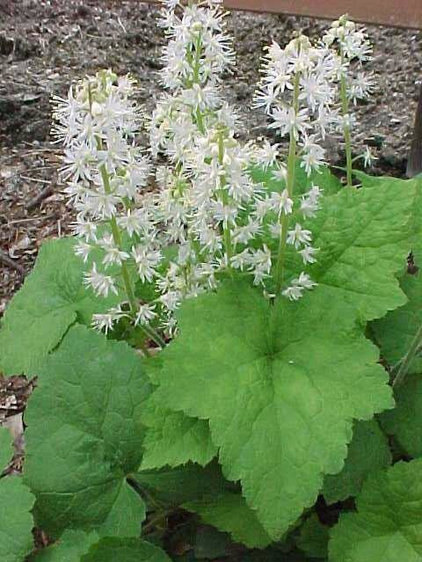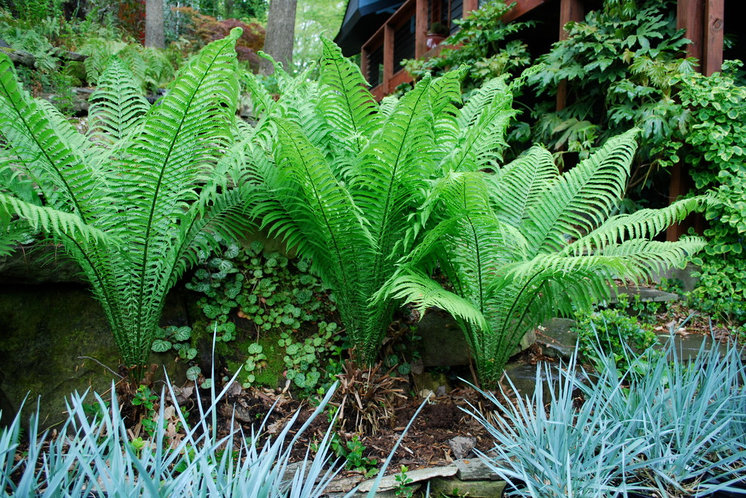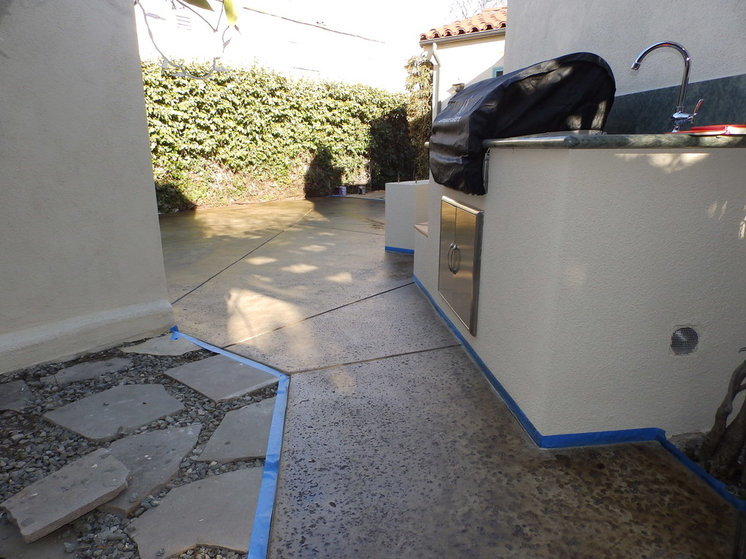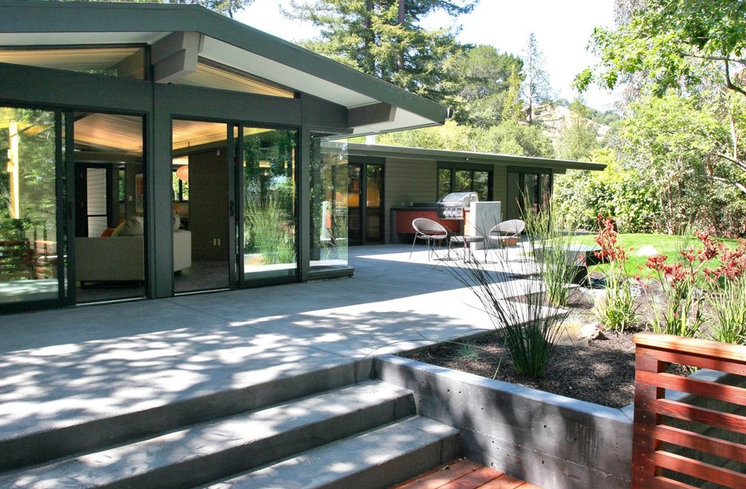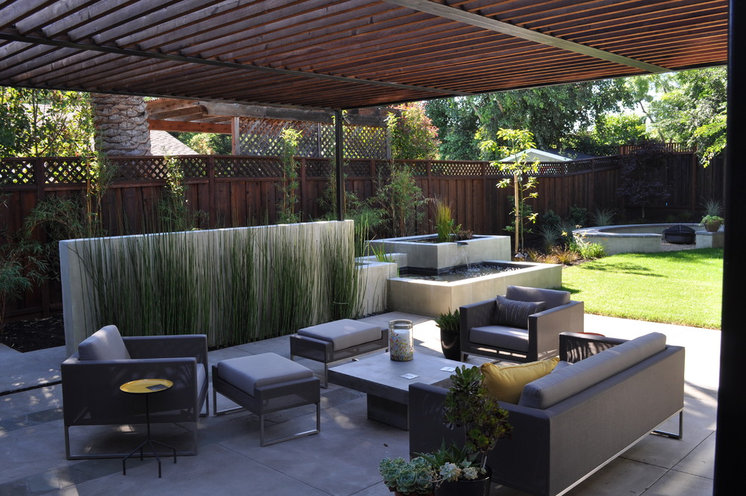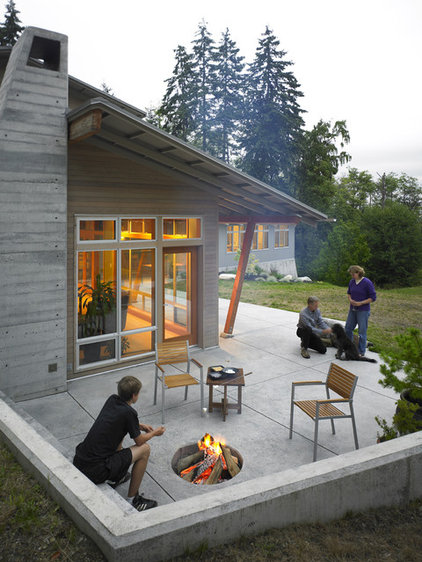Tag Archives: Painting
10 Ways to Check Your Homes Curb Appeal
“We always love articles on Curb Appeal because they help everyone. Even if you’re not preparing to sell your home, here are several simple ways to see if you have an opportunity to improve your homes First Impression.”
Denise Buck & Ed Johnson – Dc Metro Realty Team
Getting your property ready for sale can be a complicated affair. Simply cleaning your home isn’t enough—you may also need to make a few improvements to the exterior. To pique the interest of prospective buyers, it’s important to make your home look impressive from the street; in order words, you should improve its “curb appeal.” Here are ten questions to help determine if your home has curb appeal before you put it on the market.
1. Can the House Be Seen From the Street?
Prospective buyers who see and admire your home are more likely to go inside, and those who go inside are more likely to make offers. For said buyers to come in the door, they first have to see where they’re going. Take a look at your property from the street—can you clearly see the architectural details? If not, you may need to prune trees, shrubs, and other impediments so buyers can get a better look.

(Credit: Iriana Shiyan/Shutterstock)
2. Do Your Neighbors Help or Hurt You?
Since the curb in front of your home extends around your whole block, you could say that your neighborhood plays a role in your property’s curb appeal. Even if you make your home’s exterior as elegant as possible, prospective buyers may be turned off by the other homes on the block. If the other properties in your neighborhood are looking a little shabby, consider making friends with the homeowners and asking them nicely to dress up the neighborhood a bit. You might also offer to assist with small improvements or enlist the help of a local home improvement professional.

(Credit: rSnapshotPhotos/Shutterstock)
3. Does Your House Feel Private?
Even if you live in a fabulous neighborhood, you probably want a little privacy every now and again. Privacy is especially important for neighborhood newcomers, who will need some time adjusting to their neighbors. To make your home more appealing to prospective buyers, consider adding new fences, a row of arborvitae, or other privacy measures. A home with ample privacy will help buyers feel safer and more secure.

(Credit: romakoma/Shutterstock)
4. Would Someone Want to Come Inside?
When prospective buyers are thinking about touring the inside of your home, you can bet that they’re looking at the front door. A good-looking front door should beckon buyers to come inside and make them think about what their future houseguests will see. If your front door is in sorry shape, you might think about restaining it, repainting it, or replacing it altogether. If you don’t want to replace the whole door, you might just replace the hardware (door knob, lock, hinges, and knocker). An attractive wreath can also make your front door look more appealing.

(Credit: David Papazian/Shutterstock)
5. How Does Your Garage Door Look?
The garage door takes up a large portion of the average home’s façade. If this is true for your property, you’ll need to make sure your garage door looks presentable. A shabby-looking garage door may reflect poorly on the rest of your property, causing potential buyers to look elsewhere. Replacing or painting your garage door is one of the most cost-effective ways to prepare your home for resale and catch the eyes of passersby. Also, replacing your garage door is a great opportunity to ensure that it better matches your home’s other architectural features.

(Credit: karamysh/Shutterstock)
6. Is Your Hardscaping Intact?
An attractive home front should appear orderly and well-constructed. Hardscaping—which refers to the use of brick, concrete, and natural stone—is a big part of curb appeal. Your driveway, walkway, flower beds and other aspects of hardscaping should be clean and devoid of cracks. Your hardscaping should also complement the landscaping and home siding so potential buyers experience positive feelings when looking at your property.

(Credit: karamysh/Shutterstock)
7. How Does Your Garden Grow?
Good landscaping can help give your property more personality. You might consider adding some fertilizer to the grass and planting a few flowers in your yard before putting your property on the market. If your yard looks a little bare, consider filling the space with a tree or shrub. One quick and affordable solution is to place a few potted plants near your front door. Since the front door is one of the first places that potential buyers look, giving it some life is definitely a good way to go.

(Credit: fotocraft/Shutterstock)
8. Are You Clean or Cluttered?
The key to attracting buyers is to make your home look its absolute best. Removing clutter from the front lawn is important for giving prospective buyers a good look at the yard and for encouraging a positive first impression. To make your property sparkle, you might also consider power washing your home’s siding and walkway.

(Credit: Michael Courtney/Shutterstock)
9. What Color is Your Home?
Generally speaking, prospective homeowners are most attracted to neutral colors. If your home is currently a vibrant, bold color, you might consider repainting it so that it’s more attractive to a wider pool of potential homeowners. Grey, beige, light blue, off white, and light brown are some of the most popular colors for homes. Be sure to consider your landscaping, hardscaping, and the other homes in your neighborhood when selecting a new color.

(Credit: Pavel L Photo and Video/Shutterstock)
10. Do You Love Your Home?
Every homeowner wants to know that they’re buying a home that’s in good condition. If a potential buyer sees that your roof, windows, and gutters are in good shape, he or she will assume that the rest of your home is well maintained. The better your home looks, the less maintenance the new owners will have to perform after moving in. The roof is an especially important aspect of your home’s exterior, as it’s vital for keeping the elements out and costs thousands of dollars to replace.

(Credit: g-stockstudio/Shutterstock)
Originally appearing on Yahoo Homes By Pro.com
Pro.com is a website founded in 2013 by service industry entrepreneurs and former Amazon executives to simplify home services — especially research on contractor fees and qualifications.
Top 10 Mid-Atlantic Native Plants
(Rudbeckia hirta)Compared with the more commonly sold yellow coneflowers, such as Rudbeckia fulgida ‘Goldsturm’, black-eyed Susans have a looser, more natural form. I like this species’ exceptionally long bloom time, typically from mid-June into October. It is short-lived, but sets a lot of seed. It tolerates a variety of soil types, including clay, and grows well in full to part sun.
Black-eyed Susans work well in borders, as shown. At 1 to 3 feet tall, the plant also mixes well with taller plants. In an established shrub bed, its tendency to reseed will result in it finding and filling in the gaps. This is a great choice for a naturalistic or cottage garden, but maybe not for a formal planting.
The flower of the species has a dark dome-shaped center surrounded by bright yellow to golden petals. A number of cultivars have fancier coloration in shades of orange, red and brown. Gloriosa daisies are cultivars of the species that have twice the number of chromosomes (tetraploid) and feature larger flowers in multiple warm hues. The cultivars are commercially available as plants or seed. To get the species plants, you will probably have to start from seed, but this is a very easy plant to grow from seed, either indoors or directly in the garden. It usually will bloom the first season, though later in the summer.
(Allium cernuum)
Native from New York south to the cooler regions of Georgia and west to British Columbia and ArizonaNodding onion is a tough native bulb that prefers sunny, dry conditions. As the name suggests, the pinkish midsummer flowers bend over at the ends of their stalks. I like to use them in a border. Since plants reproduce by producing bulb offsets, a few plants can develop into a dense planting after a few years. It can be used as a ground cover or accent plant for sunny dry sites.
As with many onion species, these tend to be deer- and pest-resistant. The midsummer blooms attract bees and hummingbirds.
(Dicentra eximia)
Native from New Jersey and West Virginia south to Virginia and Tennessee, mostly in the Appalachian Mountains; has been found growing wild from Vermont to Georgia and west to IllinoisThis is a true mid-Atlantic native, with the center of its native range in the mountains of Virginia and West Virginia. It is a great ground cover plant for shady woodlands and borders and, once established, it can handle drier soils. I have even had success growing this under a Norway maple (Acer platanoides), which is really the epitome of dry shade.
It features soft, fern-like foliage and pink heart-shaped flowers that burst forth in mid spring. Blooming can continue through the summer under ideal conditions. Bees and hummingbirds pollinate the flowers, and deer and rabbits tend to leave this plant alone.
(Tiarella cordifolia)
Native from New Brunswick in Canada, south to Georgia and west to MichiganThis evergreen, or nearly evergreen, ground cover has prolific white blooms in spring and interesting foliage for most of the year. In most nurseries you can find a number of cultivars with different patterns and color shades on the leaves. You can enjoy that foliage most of the season, since deer and rabbits tend not to feed on it.
Growing less than a foot tall, foamflower is a perfect plant to use along a path or as a ground cover among larger perennials and shrubs. Plant in partial sun to shade in average-moisture soils.
(Spigelia marilandica)
Native to woodland edges and shaded woods of the southeastern U.S., from Maryland south to Florida and west to TexasIt’s hard to miss the bright red and yellow flowers of this shade tolerant perennial. They look like miniature hummingbird feeders, which in fact, they are. Hummingbirds are the primary pollinator of this plant.
Plant in small clumps. They can also work planted in a large mass, forming a 1- to 2-foot tall ground cover in a shady garden or bed. Plant in partial sun to shade in average to moist soils. This used to be a difficult plant to find for sale, but production has ramped up and it is becoming more available.
(Matteuccia struthiopteris)
Native in the Northern United States and Europe, China and JapanThe finely divided foliage and dense cover of this fern make me feel cooler just from looking at it. There are many beautiful ferns but ostrich fern stands out with its strong architectural form. Many ferns have a mass of fronds that form a sea of green, but ostrich fern has a strong clumping tendency and maintains a vase-like shape. Growing to 3 to 5 feet tall, this plant makes a strong statement in a shady garden.
The fronds begin dying back in the fall and the plant can look a little ratty, however the dark brown fertile fronds remain intact through the winter and can add interest to an otherwise empty space.
Its native range is in the northern quarter of the U.S. but performs well in the mid-Atlantic. It likes shady, moist conditions and will tolerate clay soils. Like most ferns, it is deer resistant. In the spring new foliage appears first as fiddleheads. These are amazing to look at. Many people harvest them and enjoy eating them — after cooking — for their asparagus-like taste.
(Calycanthus floridus)
Native from southeast Pennsylvania to southeast Kentucky south to northern Florida and LouisiannaEastern sweetshrub is a native of the Southeast, with a range that extends to southern New England. What is remarkable about this plant is the exotic 3-inch blooms that decorate it in mid to late spring. It’s an understatement to say they smell sweet; I liken the scent to tutti-fruity. Once, when I got a little disoriented on a walk, I picked up the sweet scent wafting through the woods and I knew I was close to home.
Its glossy, medium green leaves form a dense hedge that might be used to enclose a shady patio. Suckers need to be pruned out if you want to keep it compact. You are treated to another scent when cutting out branches: the aroma of camphor. This may be why deer avoid browsing on this plant.
It needs protection from full afternoon sun and prefers evenly moist soil. It is also a good shrub choice if you have clay soils.
(Lindera benzoin)
Native from Southern Maine to northern Florida and west to Missouri and LouisianaSpicebush is an understory shrub, native to the eastern U.S., with high wildlife value. It produces attractive yellow blooms in early spring. Caterpillars of several butterfly species, particularly the spicebush swallowtail, feed on its leaves. Bright red berries that are favored by several species of birds ripen in late summer. The seeds can be used as a flavoring similar to allspice. Consider this a native alternative to forsythia — with benefits.
You can recognize spicebush in the woods by the citrusy scent of the leaves or stems when crushed. It naturally grows in the understory of moist woodlands, but it will adapt to sunnier sites, given sufficient moisture. Spicebush is resistant to salt and tolerates clay soils.
(Cercis canadensis)
Native from the Plains east to southern New England and south to FloridaIt’s easy to pick out eastern redbud in early spring. The magenta flowers that line the branches are unlike anything else in the forest understory. It can be used in many ways in the landscape. I’ve seen it used in an allée, with pink blooms lining the path in early spring and heavy shade through the summer. It can also be scattered like exclamation points in a few locations throughout the garden.
Eastern redbud prefers full sun to part shade in average to moist soils. As a member of the legume family, it has the ability to fix nitrogen from the air, giving it a boost in infertile or depleted soils. It can also tolerate clay soils.
In addition to the species, there are many named cultivars, including red-leafed ‘Forest Pansy’ and yellow-leafed ‘The Rising Sun’ forms and a small weeping cultivar named ‘Covey’, for small gardens. There are some problems with hardiness of cultivated plants in colder climates. You should consider the climate that the plants originated from if this is an issue. The cultivar ‘Northern Strain’ comes from Minnesota and is reported to be more cold hardy than others. The variety texensis is more drought-resistant and suited to warmer climates.
(Halesia tetraptera)
Native from southern West Virginia to Mississippi and northern FloridaThis is another southeastern plant whose native range extends into Virginia and West Virginia. It is hardy enough to grow well up into southern New England. This small to medium-size tree can be grown in sun as well as shade in average to moist soils.
The dangling white blooms appear on outstretched branches before the leaves come out, about the same time as the eastern redbuds. The flowers are a good food source for honey bees, and both bees and butterflies pollinate them. Caterpillars, such as of promethea moths, consume the leaves. Squirrels are known to feed on the seeds in the fall.
The form of this tree is variable, ranging from a single trunked tree to a multistemmed shrub. It is particularly good at stabilizing slopes, which are its native habitat.
There are, of course, hundreds of wonderful plants to choose from. To make your own choices for plants suitable to your local conditions, take a look at selection guides tailored to your region. Some examples include: Native Plants for Wildlife and Conservation Landscaping: Chesapeake Bay Watershed (my favorite for use in Maryland), the plant selection database at The Wildflower Center, Northern Virginia Native Plants guide and Landscaping With Native Plants in Pennsylvania.
9 Easy Ways to Clean & Maintain Wood Floors
“Wood floors look great, but do you know how to keep them looking great? All it really takes is the knowledge of a few tips on cleaning and maintenance.”
Denise Buck & Ed Johnson – DC Metro Realty Team
(Credit: pics721/Shutterstock)
Your floors bear the brunt of daily life – dogs, kids, cleats, muddy boots, wet footprints and more coming through your home. Your floors reveal the truth about what goes on at home through the scrape of the chair across the floor, by moving furniture or the glittery mess from a craft project.
Whether you’ve installed new flooring or are refinishing the ones you inherited, they can last for years with the proper care. Follow these nine steps for cleaning and caring for your wood floors for a lifetime of warmth, character and beauty.
1. Floor Finish
Determine what kind of finish your floor has. Not sure? To do a quick assessment on your own by rubbing your finger across the floor:
• If you don’t see a smudge (as with most new flooring), the floor is surface sealed, usually with polyurethane, urethane or polyacrylic
• If you see a smudge, the floor has been treated with a penetrating seal, like shellac, varnish or lacquer, and then waxed

(Credit: somchai rakin/Shutterstock)
2. Surface Dirt
Sweep, vacuum or sweep your floor regularly (even daily) to remove surface dirt.

(Credit: Suzanne Tucker/Shutterstock)
3. Spills and Stains
Clean up spills immediately. If it’s something sticky, use a lightly dampened cloth or rag to wipe up the sticky residue. If it’s something that stains, use a product specifically formulated for this.

(Credit: Sascha Burkard/Shutterstock)
4. Cleaning Solution
The best cleaners are those recommended by your floor’s manufacturer. Otherwise, try using a quarter cup of a pH neutral, gentle soap like dishwashing soap or Murphy’s Oil Soap in a bucket of warm water. Be sure to wring out the mop until it’s barely damp and change the water as it gets dirty. Once you’re done, rinse the floor with a barely damp mop and clean water. Note: Too much water on any wood floor may warp the wood.

(Credit: vvoe/Shutterstock)
5. Upkeep
If your floor has a polyurethane finish, upkeep is simple. Simply vacuum or sweep, then clean with a lightly damp mop. If your floor has a seal with a wax top coat, vacuum and use a dust-mop regularly, and buff to keep your floors shining.

(Credit: OSORIOartist/Shutterstock)
6. Shine Through
If your floor starts to lose its shine, then you’ll want to recoat the surface with surface finish, but never use a wax on a floor that has a surface finish. Also, do not use furniture spray on a wood floor. You’ll end up with a floor as slippery as a skating rink! Depending on the traffic on your floors, you may need to do this every 5-7 years.

(Credit: Irina Mos/Shutterstock)
7. Wax On
When buffing no longer restores the shine, you may need to rewax. Apply a cleaner and paste, or liquid wax made specifically for wood flooring. After application, let the floor dry, then buff to a shine. Paste wax takes a bit more effort to apply, but it provides more protection for your floor. Liquid wax makes the job easier, but leaves a thinner coat. Thankfully, you should only have to do this twice a year.

(Credit: Stokkete/Shutterstock)
8. Prevention
To prevent scratches, put felt pads under chair and table legs, and use doormats on the outside of your entrances and just inside your doors to help catch dirt and sand before it can get tracked in. If you’ve got pets, make sure their nails are clipped short so they won’t scratch the floor.

(Credit: BW Folsom/Shutterstock)
9. Resist Humidity
You may notice cracks in your floors during the winter, when the air can be dry, but these should fill in when the humidity rises in the summer. Your best bet is to keep the relative humidity in your home between 35% and 55%.

(Credit: Vinogradov Illya/Shutterstock)
Pro.com is a website founded in 2013 by service industry entrepreneurs and former Amazon executives to simplify home services — especially research on contractor fees and qualifications
Originally posted on Yahoo! Homes by: Spaces Contributor
Make Your Concrete Patio Beautiful
If your patio simply can’t be refurbished because it is severely cracked or is not sloped well for drainage, learn how to tear down a concrete patio.
The surface treatments here are for concrete that has already been fully cured.
- Stain: Stains for concrete work by breaking into the surface of the paving and altering the color and/or texture. Essentially, they weaken the surface and require a sealant over the stain so that the paving doesn’t degrade.
- Scoring pattern: Scoring patterns are made simply by cutting into the concrete about ¼ inch. The cuts make a pattern across the paving that give the field of concrete a visual rhythm. Popular scoring patterns include grids, diamonds and repeating lines.
- Paving veneer: It is possible to add pavers over your existing concrete, so long as the finished height of the paving does not pose any hazards with drainage or walking. The construction detail uses the concrete as a foundation, and the pavers are mortared to the concrete base. Pay attention to how the paving’s added thickness affects the edges of your patio so that all of your stairs and walkways match up at the proper height.
A safety note about finishes: When choosing a stain or sealant, you want to maintain a nonslip surface outdoors. Therefore, most interior concrete finishes are not suitable for a landscape patio, because they become too slippery after a rain. If you are going the DIY route with stains and finishes, be sure to use only what’s formulated for outdoor use.
Don’t want to commit to building a wall? Try a trellis with vines or an outdoor screen to create an enclosure and privacy.
Think about how you can change the natural light, or add downcast lights to give your patio a different character at night. Create shade to make a patio that’s blinded by full sun feel more inviting. Brighten a dark, gloomy patio by bringing in more natural light or adding low-glow lights for nighttime.
Look at your patio and see how it can be framed overhead. This will also work to your advantage in changing the natural light. An overhead trellis creates its own pattern of light and offers the opportunity to support flowering vines, lights, a ceiling fan, speakers for music and more.
A great outdoor patio is a place for people to gather and spend time in. So, the simplest tweak is to bring out the lawn chairs and the grill and have a party. You’ll love your patio then.
By Falon Muhalic, Houzz Contributor, Landscape architect
Before & After Curb Appeal
 “It’s the perfect time of the year to take on any number of outdoor projects that can really make a difference in your homes Curb Appeal. Here are 8 projects that are fairly simple, but have big impacts.”
“It’s the perfect time of the year to take on any number of outdoor projects that can really make a difference in your homes Curb Appeal. Here are 8 projects that are fairly simple, but have big impacts.”
Denise Buck & Ed Johnson – DC Metro Realty Team
Photo: charmingzebra.com
1. Paint Your Front Door
The front door makes a big impression—it’s the first and last thing visitors see. Painting your door is a quick and low-cost way to instantly boost curb appeal. Whether you go with a stately classic like black or a bright pop of color like yellow or red, a fresh coat of paint will instantly spiff up a tired exterior.
2. Make Your Porch an Outdoor Room

Photo: abeautifulmess.com
Sometimes all you need to do is add decorative elements to transform a space from blah to beautiful. This front porch becomes a bona fide extra room in warm weather, thanks to the addition of a rug, outdoor furniture, throw pillows, and plants.
3. Update Your Address

Photo: balancinghome.com
Add a little art to the front of your home with a DIY house number upgrade. This graphically assertive sign required just a board and a little paint that was already on hand, along with some stencils for the numbers. The results are bold—the pizza delivery guy will never miss this house again.
4. Hide Your Electrical Box

Photo: loveoffamilyandhome.net
Practical components like utility boxes and gas meters are a necessary evil, but do they have to be so ugly? Actually… no. Camouflage your service points by painting them with exterior paint in a shade that matches your siding. They may not completely disappear, but they will definitely blend in, improving the overall look of your home.
5. Lay Out the Landscaping

Photo: loveoffamilyandhome.net
Creating a small, modestly planted landscaping bed will make the side of your house look tidy and and add color your home’s exterior. Recreate the cheerful transformation with some inexpensive edging, weed barrier, mulch, and plants.
RELATED: On the Edge: 16 Garden Borders You Can Make
6. Hang New Shutters

Photo: livethehomelife.com
Fresh, new shutters can almost instantly enhance your home’s curb appeal. Swapping these weary, boring white eyesores for some new board-and-batten cedar shutters made a huge impact on this facade.
RELATED: 10 Easy Curb Appeal Updates
7. Perk Up Your Pathway

Photo: zenshmen.blogspot.com
A modern pathway makeover doesn’t have to be expensive or require professional labor. This walk was installed right on top of the old concrete path. The project can be completed in a half day, using simple tools and supplies from a big-box hardware store. The result is a sensational improvement that makes the house even more welcoming.
RELATED: The Right Path—15 Wonderful Walkway Designs
8. Upgrade Your Mailbox

Photo: beneathmyheart.net
The mailbox may not seem like a big contributor to curb appeal, and it’s often just an afterthought in home construction. This makeover is so much easier than it looks, accomplished by simply fitting a cast-stone surround over a 4×4 post.
Originally Appearing on Yahoo Makers – by Jennifer Noonan
How safe is your Deck? Check it Now!
 “It’s that time of year when we begin to use our decks again. But what happened to it during the winter months? Did moisture create cracks or mold? Have beams warped or started to sag? It doesn’t take long to check out the basics to give yourself peace of mind.”
“It’s that time of year when we begin to use our decks again. But what happened to it during the winter months? Did moisture create cracks or mold? Have beams warped or started to sag? It doesn’t take long to check out the basics to give yourself peace of mind.”
Denise Buck & Ed Johnson – Dc Metro Realty Team
Aging deck structures, harsh storms, high temperatures, and a lack of routine maintenance can increase the risk of a deck injury.
There are more than 40 million decks in the United States that are more than 20 years or older, according to the North American Deck & Railing Association, and hundreds of reported deck accidents occur annually.
Check your deck by following these seven deck safety inspection tips from outdoor living company Archadeck:
Boards: Check deck boards for rot, softness, or major cracking.
Every Connection: Inspect every hardware connection on the deck. Look for screws and/or nails backing out, red rust, and other signs of corrosion on metal connectors that can weaken the integrity of the deck.
Structure: Look at the posts, beams, and joists that provide the structural framework of the deck. Is there any noticeable sagging between supports?
Attachments: Most deck failures occur at the attachment site to the home. Ensure that the deck is properly attached to the house with bolts (not nails) and proper flashing for water protection.
Foundation/Footings: The foundation and footings support the weight, or load, on a deck and the columns that bear on them. Look for sinking or a noticeable sag.
Exits: Check deck’s exit areas, usually stairs. Are the stair stringers, treads, and risers ok? Do the stairs require a handrail? Is there adequate lighting to safely use the exits at night?
Rails: Look at rail posts and railing sections to make sure that they aren’t loose or wobbly. All pickets/balusters should be fastened securely and spaced no more than four inches apart.
Source: Archadeck, Originally Appearing on Houselogic
Read more: http://www.houselogic.com/news/decks/7-quick-ways-tell-if-your-deck-needs-help-now/#ixzz3YnM7sU2h
Follow us: @HouseLogic on Twitter | HouseLogic on Facebook
Is Your Home Ready to be Sold?
 “It’s that time of year when many people start to think about selling their home. Spring is coming and that is when homes look great and everyone is finally coming out of their cocoon to start looking. But is your home ready to be sold? We always help our Sellers identify the items that are most important to implement in each home before it goes on the Market. Here are some good tips that we’ve found, and follow ourselves.”
“It’s that time of year when many people start to think about selling their home. Spring is coming and that is when homes look great and everyone is finally coming out of their cocoon to start looking. But is your home ready to be sold? We always help our Sellers identify the items that are most important to implement in each home before it goes on the Market. Here are some good tips that we’ve found, and follow ourselves.”
Denise Buck & Ed Johnson – DC Metro Realty Team
Selling a home doesn’t happen overnight. To maximize your sale price, stand out from the competition and sell quickly, your home needs to go on the market in tip-top condition.
Prepping the home rarely happens in one weekend. It takes time and thoughtful planning. If you intend to sell your home this spring, here are a few steps you need to take now.
Stash your stuff
As you prepare to sell, think of your home as an investment and start to see it through the eyes of potential buyers and the market. When you’re trying to sell your home, the less-is-more approach applies.
Put away big furniture and personal items. Store or put away all the things you won’t be using until you move into your new home. In the kitchen, make space in the cabinets for items you will need to use daily, but will want to put away for showings.
Paint, clean and make small improvements
It’s common for sellers to make cosmetic improvements before they list. Kitchens and bathrooms sell your home. Plan to have the bathroom grout cleaned and have some parts of the house painted to give it a fresh look.
Consider cleaning rugs, refinishing hardwood floors or painting kitchen cabinets. If you plan to list in the spring, you likely have a good local real estate agent on your side by now. Get their advice and ask for referrals to do the work. There are lots of inexpensive contractors who can help spruce up your home quickly.
Research like a buyer
Today’s buyers have research in their DNA and will investigate all they can. Check with your local building department and ensure there are no outstanding issues with your home.
Verify that property records reflect your home accurately, and prepare to remedy any discrepancy. Make sure your title report is clean, and talk about potential disclosure items with your agent. Banks won’t lend if there are outstanding issues, and you don’t want to jump through hoops at the eleventh hour. Researching now will keep you one step ahead of the buyers.
The sale of your home is likely one of your biggest financial transactions. Get a real estate agent on your team early, and make a list of all the tasks you need to complete before listing this spring. Now is the time to have those discussions. Smart planning and a good strategy will ensure a quick, painless and profitable home sale.
Originally Published by Brendon DeSimone from Zillow
Home Improvements that Pay Off
 “Everyone thinks that upgrading and improving different areas in the home will add value. Unfortunately that’s not always true. Sometimes you need to do upgrades in order to prepare you home for Sale, but that’s so you can compete in the market, not add value. Sometimes you want to change something so that it will meet your personal desire or taste, again, it may not add value. Be aware of what adds value so that you have realistic expectations on the return for your investment.”
“Everyone thinks that upgrading and improving different areas in the home will add value. Unfortunately that’s not always true. Sometimes you need to do upgrades in order to prepare you home for Sale, but that’s so you can compete in the market, not add value. Sometimes you want to change something so that it will meet your personal desire or taste, again, it may not add value. Be aware of what adds value so that you have realistic expectations on the return for your investment.”
Denise Buck & Ed Johnson – DC Metro Realty Team
Despite what you see on TV and what the conventional wisdom says, most of the home improvement projects with the greatest return on investment are unglamorous. According to Remodeling Magazine’s 2014 Cost vs. Value report, you’ll recoup the greatest percentage of your investment on projects such as replacing the front door with a steel one, adding a wood deck, replacing old siding, replacing the garage door and replacing old windows. Also contrary to conventional wisdom, most home improvement projects do not return more than your investment when you sell. In fact, the average remodeling project only recoups 66 cents for every $1 you spend on it. To get the highest percentage of your remodeling dollars back when you sell, here’s what to improve, what not to improve and why.
Best Options: Practical, Midrange Projects
Do you want to get back 96.6% of what you spend on a home upgrade? Then replace your old front door with a new, mid-range steel door with a clear dual-pane half-glass panel and a new lockset. You’ll spend an average of $1,162 for this project, but you’ll get back $1,122 when you sell, Remodeling Magazine reports. Another project in the same price range is replacing your garage door for $1,534; you’ll recoup $1,283, or 83.7%. You won’t need a home-equity loan to tackle these projects, and their low cost and high impact on curb appeal make them smart choices.
“Curb appeal is the biggest selling factor,” says Diana George, founder of Oakland, Calif.,-based Bay Area real estate brokerage Vault Realty Group. “If the house looks unkempt on the outside, buyers automatically assume the same will apply to the interior of the house.
If you can afford to spend more, consider projects such as adding a 16’ x 20’ wood deck, which costs $9,539 on average but recoups 87.4% of its cost; replacing 10 old 3’ x 5’ windows with new, double-hung, wood or vinyl ones, which costs close to $11,000 for wood and nearly $10,000 for vinyl but recoups about 79%; or replacing vinyl siding, which costs $11,475 for 1,250 square feet but should bring back $8,975 when you sell.
“Windows, garage doors and decks aren’t necessarily big-ticket items in terms of price or luxury,” George says, but “updating these items gives the home an instant facelift and contributes to a modern aesthetic, which is exactly what potential homebuyers want to see when they drive up to look at a new home.”
Pricier Projects
Two of the priciest – but still relatively worthwhile – improvements include attic bedrooms and basement remodels. These projects will set you back tens of thousands of dollars, but are a relatively inexpensive way to increase your home’s useable square footage compared with an addition. Minor and major kitchen remodels also make the cut, as do bathroom remodels. However, while it may be true that kitchens and bathrooms sell houses, forget about doubling your money. You’re likely to recoup just 82.7% of your $18,856 cost on a minor remodel of a functional but dated 200-square-foot kitchen; 74.2% on a $54,909 major kitchen remodel and 72.5% on a $16,128 remodel of a 5’ x 7’ bathroom. These are the types of expensive projects you might be tempted to finance with a home-equity loan, but you should think twice before borrowing money and paying 6% interest or more to finance a project with a negative return.
The costs Remodeling Magazine provides are averages. If you can get a project completed well for less, you might be more satisfied with the percentage of its costs you get back when you sell your home. Costs vary by geographic region, project size and scope, and the quality of finishes you choose.
“Bathroom upgrades can be done for a minimal cost using materials that look expensive, but are quite affordable,” says Jeff Dumas, owner and broker at Home Ventures Realty in Tempe, Ariz., where he’s rehabbed and sold residential properties for more than 10 years. “Most of the time, I can take an average starter home, put in a new tub with a porcelain tile backsplash, new toilet and vanity, tile the floor, and use some decorative hardware for about $1,500 to $2,000. The results are amazing and help the wow factor when potential buyers are viewing the property,” he says.
Surprising Disappointments
Backup power generators and roofing replacements are among the projects on which homeowners will recoup the least at resale. You might get back just 67.5% of the $11,742 you spend on a generator and 67.6% of the $18,913 you spend on a roof. Also at the bottom of the list are sunroom additions, bathroom additions and master-suite additions. These projects are expensive and involve weeks or months of disruptive construction, so don’t take them on unless they’re for your personal enjoyment and you’re planning to stay in your home for years to come. Remodeling a home office is the least worthwhile project on the list, recouping just 48.9% of the $28,000 it’s likely to cost.
That being said, some of these projects are more valuable if you live in areas where they’re in higher demand. In the West South Central region, which includes storm-prone areas in Texas, Oklahoma and Louisiana, a backup generator will recoup 86% of its cost, on average.
By Amy Fontnellie, Originally Published on Yahoo Homes
Enjoy Your Improvements and Profit by Them
 “One of the things our clients usually ask about is how they can improve the value of their home. Different projects have different returns. Some add value, while others maintain. Want to know more? Check out this article below for a few quick tips.”
“One of the things our clients usually ask about is how they can improve the value of their home. Different projects have different returns. Some add value, while others maintain. Want to know more? Check out this article below for a few quick tips.”
Denise Buck & Ed Johnson – DC Metro Realty Team
Homeowners can raise the basis or cost in their home by money spent on capital improvements. The benefit is that it will lower their gain and may save them taxes when they sell their home.
Improvements must add value to your home, prolong its useful life or adapt it to new uses. Repairs are routine in nature to maintain the value and keep the property in an ordinary, operating condition.
Additions of decks, pools, fences and landscaping add value to a home as well as new floor covering, counter-tops and other updates. Replacing a roof, appliances or heating and cooling systems would be considered to extend the useful life of the home. Completing an unfinished basement or converting a garage to living space are common examples of adapting a portion of the home to a new use.
Other items that can raise the basis in your home are special assessments for local improvements like sidewalks or curbs and money spent to restore damage from casualty losses not covered by insurance.
Here’s a simple idea that could save you money years from now.
Every time you spend money on your home other than the house payment and the utilities, put the receipt or canceled check in an envelope labeled “Home Improvements.” Regardless of whether you know if the money would be classified as maintenance or improvements, the receipt or cancelled check goes in the envelope.
Years from now, when you’ve sold your home and you need to report the gain on the property, you or your accountant can go through the envelope and determine which of the expenditures will be adjustments to your basis.
Some people disregard this idea because of the generous exclusion allowed on principal residences. At the unknown point in the future when you sell your home, circumstances may have changed and the proof of these expenditures will be valuable. The tax laws could lower the exclusion amount or eliminate it altogether. Your marital status may change because of death or divorce. The market value of your home may skyrocket.
Since the future is unknown, it is better to keep track of the improvements as they are made and how much is spent on them. Download an Improvement Register and examples or read more in Publication 523 on Increases to Basis.

